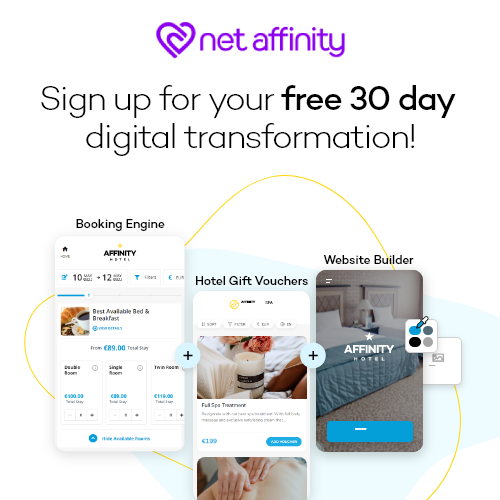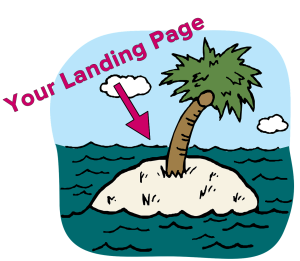Are you challenged by building the perfect landing page for your hotel’s special offers? You’re in the same boat as a lot of us, if that’s the case! Landing pages are full of uncertainty, and there are so many possible ways to create them that trying to pick “the best one” can be overwhelming.
There isn’t just one way to build a “perfect” landing page. While there are key elements that all the best ones share, there are a hundred different ways to build them. Some will work for your hotel, and some will not. The 7-step version in this article is strong, clear and simple – no fancy tricks, but we’ve seen it get great results time after time.
We’ve picked up on a few important things in our time building landing pages for our hotel clients, though, so today we wanted to share the love.
We have a 7-step formula that’s simple, but consistently gives hotels strong results for their campaigns. It drives direct bookings to their site and raises the profile of their special offers.
Landing pages are designed to do exactly one job: converting visitors to hotel guests for one specific offer. These 7 steps are a way to cut through the clutter, cut out uncertainty, and cut to the heart of the matter – bookings.
So, without further ado, here’s our favorite formula for building the perfect landing page:
1. Start with a Blank Slate
The internet is overflowing with distractions. When it comes to your landing page, you want it to be a peaceful island in the middle of the noise. That means stripping away any distractions so you visitors focus on what you want them to: your offer.
Take away as many links as possible on the page. No linking to other offers on the site! You should even take out unnecessary parts of the navigation bar – do you want people on the verge of booking your spring offer to get distracted by your weddings gallery?
The entire focus of the landing page should be to get the person to accomplish one goal. This could be to take part in the competition or to take advantage of the offer. You should be sending them to a participation page, a checkout page or an opt-in form for the offer. However, links to other pages and any other distractions should be eliminated.
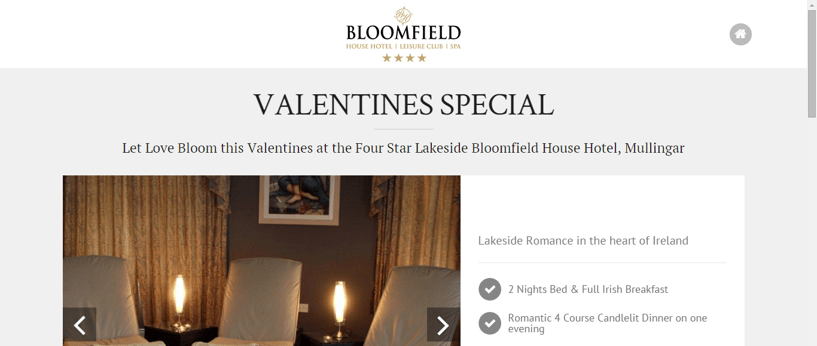
An example of one of Net Affinity’s favourite landing pages is this one by Bloomfield House Hotel. You will notice that the distractions are minimal. The only distractions are the buttons present at the top and bottom of the landing page. These aren’t problems, though, because they’re minor and only steer the person to the home page. Also, the button is fairly bland looking and doesn’t attract much attention.
Another important point to note is that the images on this landing page are free of links. Quite often people leave the link inserted in the images on online marketing materials like landing pages and blog posts. This is another distraction that can force the readers to exit the page. When you’re building your landing page, make sure the images are link-free.
2. Write a Powerful Headline
A well-designed landing page will only work if it contains words that get your message across to the reader. If you have already created the competition or offer based on some effective audience research, writing the copy should be a piece of cake: the copy will just match the words you’ve used in your emails or on your banner ads!
When you create a headline for a landing page, some typical things to focus on are making it SEO friendly, clarity and the wow factor.
But for a seasonal competition or offer landing page, you can more or less forget about SEO (I know- I never thought I’d type that either). Why? The page is temporary. You shouldn’t even have it indexed to show up on Google. You will most likely redirect the page or delete it entirely at the conclusion of the competition or offer.
This is great for you, because you only need to focus on 2 things: Making sure your headline is clear and has the power to make your target audience go “wow- that’s fantastic!”
When we talk about clarity, it doesn’t mean making your headline a 12 or 15 word mini-paragraph detailing your offer. Instead, give just the right amount of information to peak interest.
Here’s an example. Instead of writing “Fabulous 2-for-1 summer offer with a spa break, breakfast included, midweek only”, write, “Fabulous Summer Spa Getaway“, or “2-for-1 Summer Escape“. They have the highlights – it’s during the summer, and it’s a spa break/a 2-for-1 deal (to figure out what benefits to focus on, look at your target audience. Are your guests typically more budget-conscious, or do they come to you for luxury?).
If you’re having trouble keeping it short, put in a supporting headline that gets a bit more descriptive. Bloomfield’s structure is “Valentine’s Special”, followed by “Let Love Bloom this Valentines at the Four Star Lakeside Bloomfield House Hotel, Mullingar”.
To craft shareable headlines, having strong emotional cues is a big help. A study by Ok Dork and Coshedule found that headlines with the most shares were highly emotional.
3. Have a Hero Shot
Your hero shot is a picture or video illustrating your special offer. If you have a video, we encourage you to use it: Videos can improve conversion rates by up to 80%.
Your hero shot should be at least mostly above the fold – no one should be scrolling to look at it. A picture or video is a powerfully persuasive thing, and you should absolutely leverage that.
For example, a wedding-related offer might include a happy bride and groom outside your hotel on a beautiful day, and an autumn offer might include a pumpkin patch full of kids.
Keep your hero shot full of color, and reflect the feel of your hotel, whether that’s luxurious, a boutique, or built for families. Here are a few tips for selecting the right image for your hotel.
4. Pitch the Benefits
Here’s where you hit the specifics. Who is your offer for? What does it include? How much does it cost? And what makes you special? Your body copy is your USP + the benefits of your offer.
The body copy of your landing page should:
- Pitch the features of your hotel as benefits to guests. Answer their question: “What does this do for me?”
- Match your headline in tone – make sure the content of your benefits section makes sense with your headline (e.g. if you’re pitching a summer escape, mention summer, the heat, or the need to get away in your body copy)
The hardest part of this is to be as succinct as possible. Readers should be able to process the information quickly and share details on how to take part in a tweet (140 characters).
Here’s a formula:
- A short, descriptive paragraph following on from the headline
- 3-5 bullet points with the benefits of your offer
- Your call to action
If you’re running a competition instead of a sale, make sure the prize can be explained in just a few words.
Talk about value:
An easy way to get people excited about a competition or offer is by telling them how much it’s worth.
When people are deciding whether or not it’s worth their time, one of the factors they will ask themselves is ‘How much money is this worth?’ Make it easy for them – displaying the price clearly on the landing page, and show them how much it would usually cost. You might try showing the original price crossed out, and your special price next to it in a bright color.
5. Display Social Proof:
People can be skeptical about offers and competitions, especially if it sounds too good to be true. Social proof is a great way to show your legitimacy, and make sure they know how happy your past guests have been at your hotel.
Easy ways to do this are by displaying reviews from happy hotel guests, the number of people who have already participated in the offer or competition, and so on.
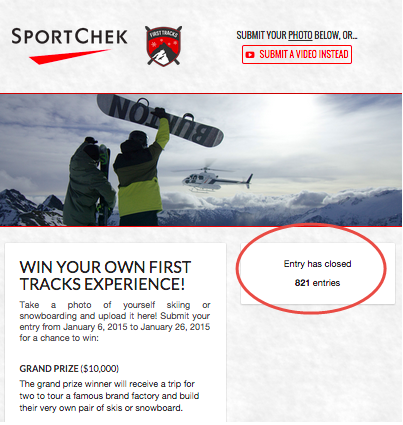
An example of a competition using social proof is the above one by Sport Check. They have clearly displayed the number of participants. When visitors see that hundreds of people are taking part, they’ll be inclined to do the same.
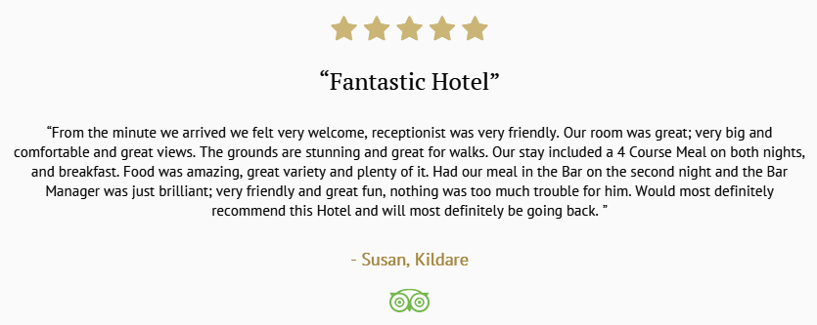
Social proof can also be displayed using reveiws. Here’s one from the aforementioned landing page from Bloomfield House Hotel. They work really well because people are more likely trust what other people say about you more than what you say about yourself.
6. Have a Bright, Colorful Call to Action
Step 6 is your call to action, or CTA. The CTA is the final barrier between the visitor and making a booking. They clicked the ad, they read the landing page, and their eyes fall on your CTA. What does it look like?
The best calls to action contain very little text and are in the form of buttons. They also attract the most attention. Create all your CTAs in a colour that stands out.
One tool to find a colour that stands out and still looks good with the overall design of the page is Adobe Color. Visit Adobe’s color picker, check out the various combinations they have displayed and then pick the one that contains colours similar to your landing pages. Then choose the standout colour from the pastels and use it as the colour of the call to action button.
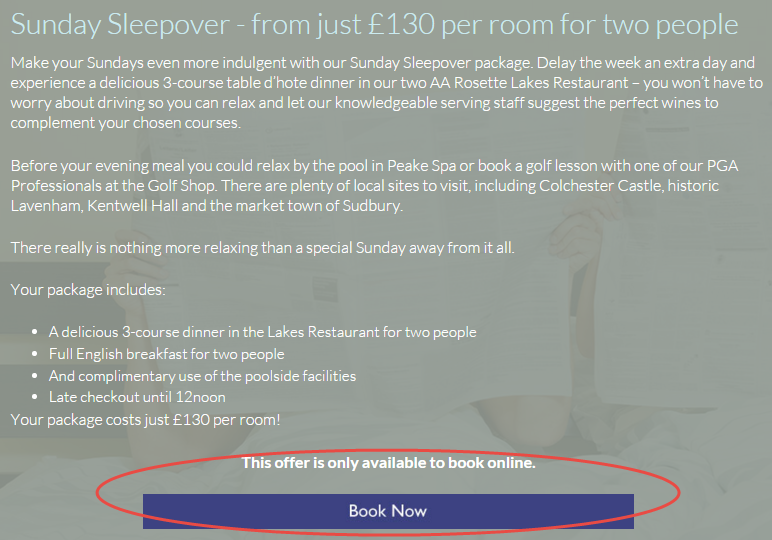
An example of a strong call to action can be seen on this landing page. The violet button is the only thing on the entire page with that colour and it suits it. It’s also opaque, while the rest of the landing page is translucent. This ensures that maximum attention is diverted towards the button.
However, if you click through to the full landing page, make a note that there is a massive flaw with this landing page. There are so many other things to click on, they’ve tacked on a signup to their email list, the navigation bar is distracting, and – maybe worst of all – you need to scroll down to see the CTA. They’ve got colour theory down, but don’t model your landing page after this one.
Display Time and Product Constrains:
Putting urgency or scarcity cues near your CTA can help drive conversions. When we realize there’s less of something, we generally want it more. Try showing the number of rooms left for sale, the number claimed so far, or the time left to take advantage of the deal or competition.
You might have already noticed this on Amazon. When a product is scarce they display the number of items left in stock. People driven by fear of the product being gone, or envy, will want to buy it before somebody else does.

A place you can see it on is the copy on this landing page from Select Hotels Ireland promoting an Easter competition. In the copy, they make it clear that there will be only ‘4 lucky couples’ who will win. This shows that the product is scarce and more people will want to take part. Don’t think it works like that? Take a look at the lottery.
Similarly, you can display time constrains by telling the reader when the competition or offer will end. Some marketers even add a live countdown timer which displays how much time is left to take part. A tool like Deadline Funnel can help you create this. Some landing page tools like Leadpages and Unbounce also have this countdown feature.
7. Test Before and After You Launch:
The biggest mistake people make with landing pages is that they make the first draft of their landing page, publish it… and stop. The thing about landing pages is that there’s no magic guarantee of success – all you can do in your initial design is follow best practices (like these 7 steps) and make it compelling as possible. Landing pages perform based on the type of audience that visits it.
So, before you dust off your hands, make two or three more versions of your landing page*. Test different versions of the landing pages to see which one gets you the highest profit. They could have minor differences like longer or shorter copy, blue or red call to action buttons, video instead a photo, and so on.
Drive traffic to these pages until you find a landing page formula that gives you the highest amount of return for money spent on advertising.
You don’t need to stop there; you can keep trying different variations until the campaign ends, as long as you’re always optimising for the best possible page. This post should give you some landing page split testing ideas.
*Split, or A-B testing, is only useful if your hotel drives a lot of traffic. If you don’t have the numbers, try running different versions of your landing page past other people. Ask other members of staff and people without ties to your hotel. To see if specific elements of your page are drawing the attention you want them to, try the Five Second Test. For a small fee, you get a statistically meaningful sample of people to tell you what information they get from 5 seconds looking at your landing page. Do they know what it’s about? Did they notice the CTA? Did anything confuse them?
To sum up:
Our 7-step formula for a perfect landing page is:
- Start with a blank slate
- Write a clear, powerful headline
- Add a hero shot
- Create a compelling list of benefits
- Use social proof to your advantage
- Have a stand-out CTA
- Test!
We hope you feel like you’ve got a tool to really help you build a perfect landing page for your hotel. Once you’ve got a good handle on what works for your hotel, feel free to play with the formula – maybe put in an expanded benefits section below the fold, or a small form if you’re running a competition.
For now, though, go forth in the knowledge that you’ve got a 7-step formula to help you build the perfect landing page.
Words by Tayor Smariga
